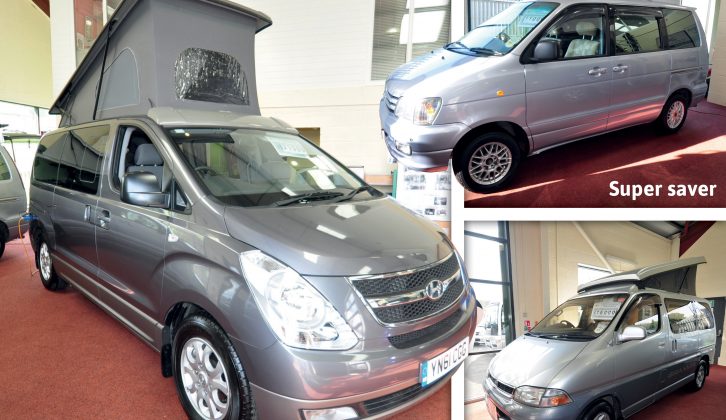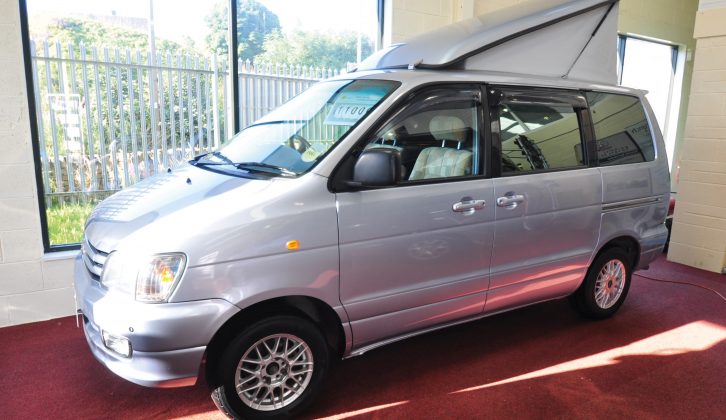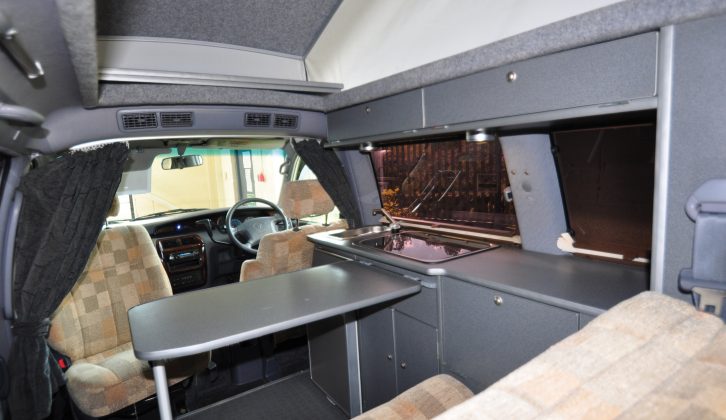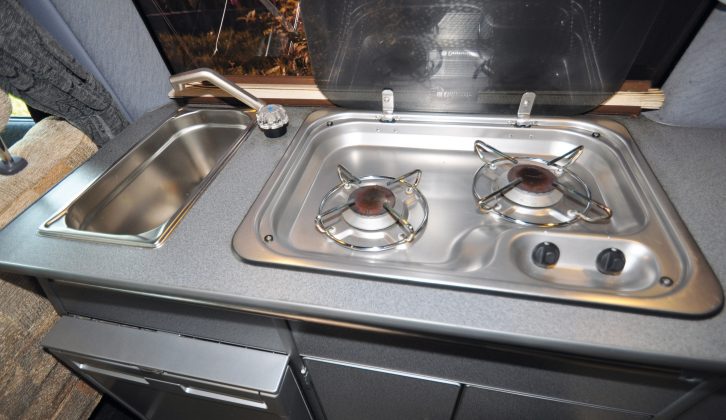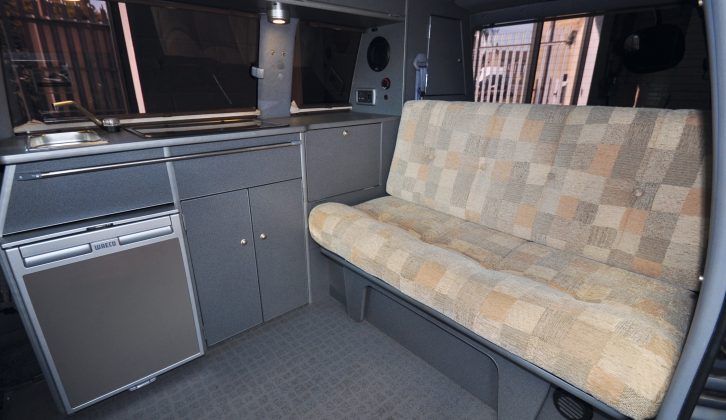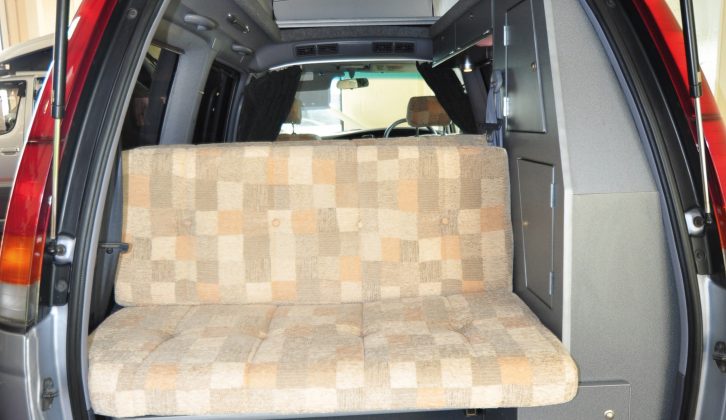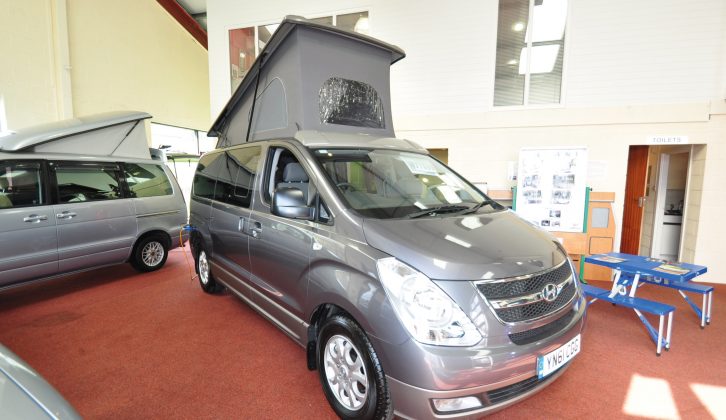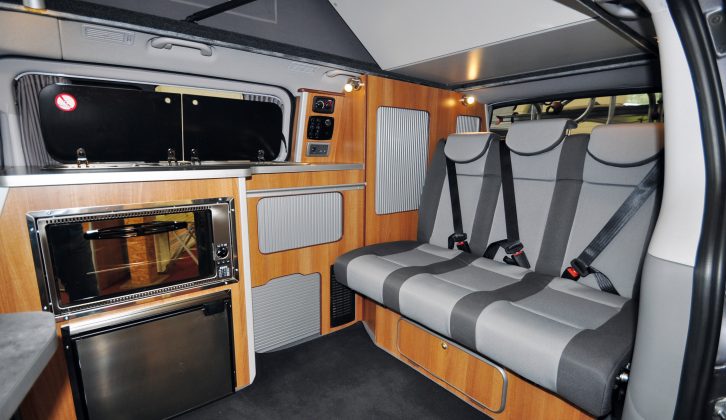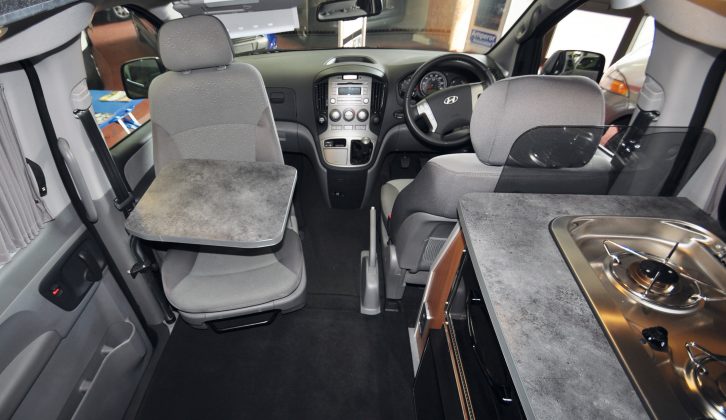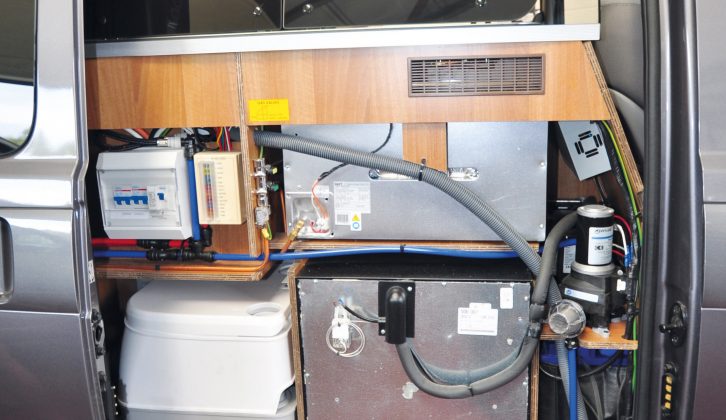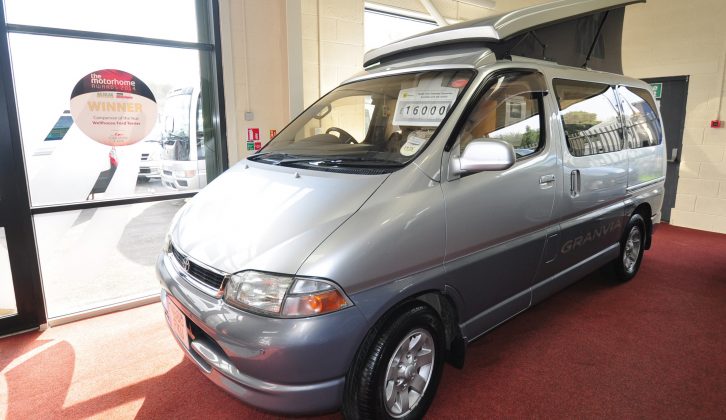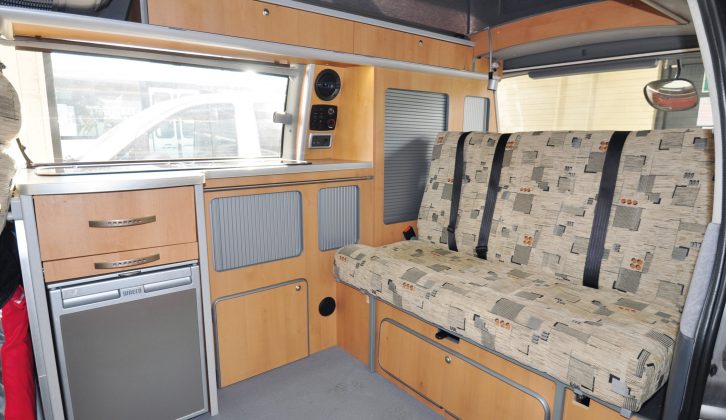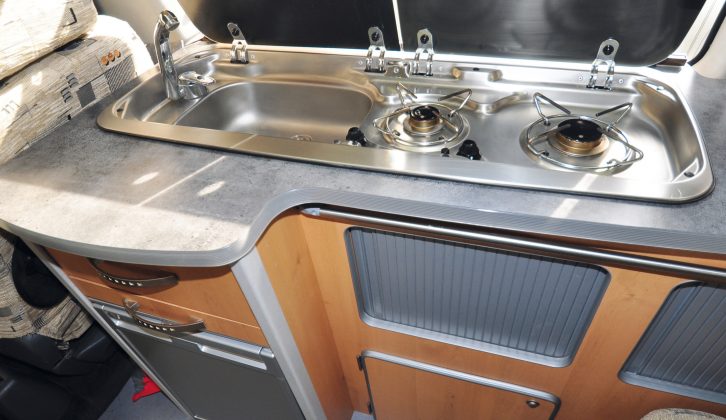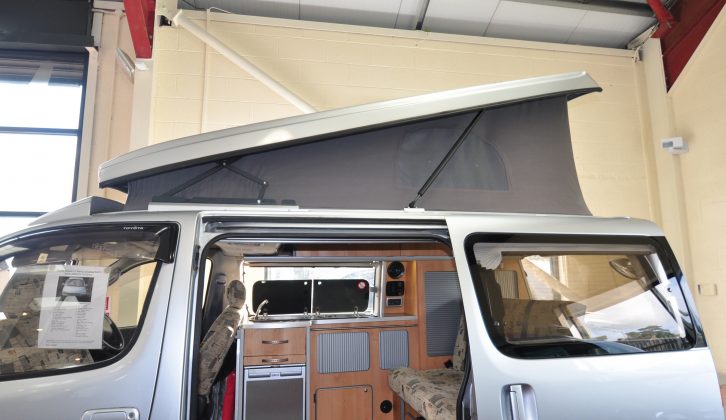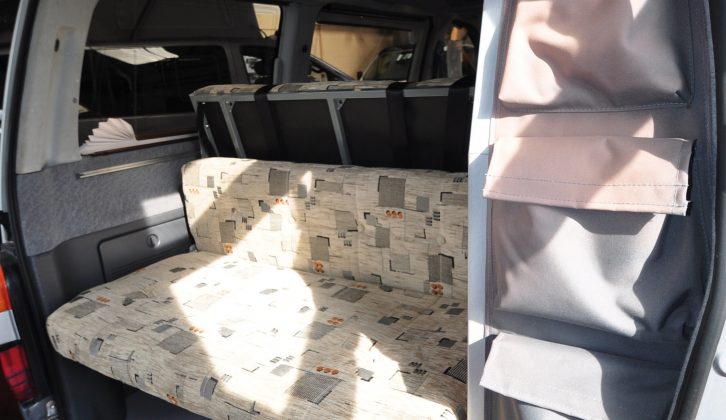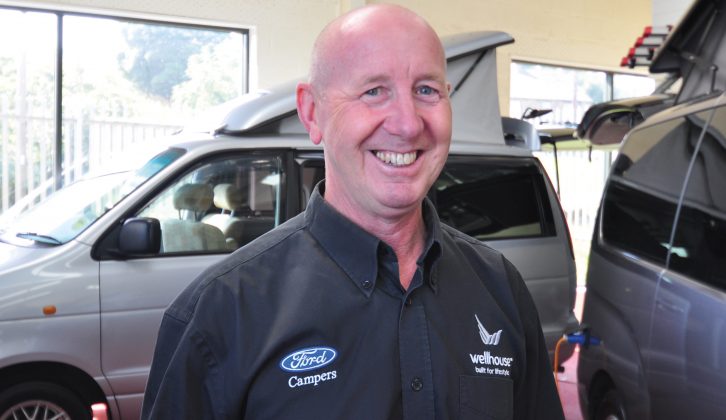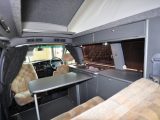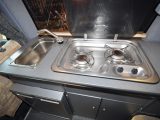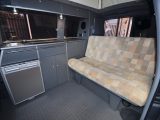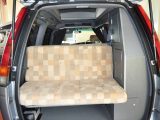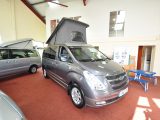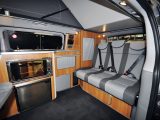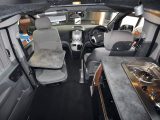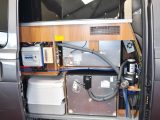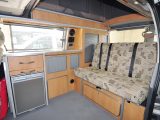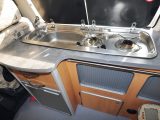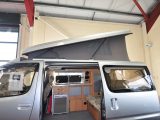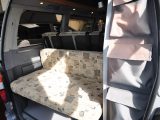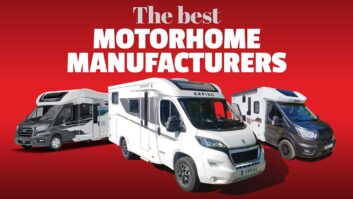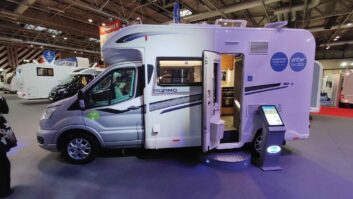Of all the leisure vehicles that are available, nothing beats a campervan for sheer flexibility. Use them as a daily driver, for shopping, on the schoolrun, carriers of light loads… and, of course, to get away on holiday whenever and wherever it suits.
Add a tent or drive-away awning – especially one of the recent inflatable offerings – and you have room for all the family (many campers will sleep four) on an action-packed break.
The rise of the campervan meant that the 2015 Düsseldorf Caravan Salon had to set aside extra space for van conversions from all over Europe.
The latest crop of campers are more car-like than ever before and Wellhouse Leisure – the subject of this used ‘van challenge – is at the vanguard of recent movements in campervan conversion.
Not only did it offer a groundbreaking camper in its Hyundai i800 conversion, but it also beat every other UK converter in bringing out a superb conversion of Ford’s latest Transit. Plus, it has now taken the Mercedes-Benz Vito under its wing.
This just goes to show that there’s more to campervans than Volkswagens – although Wellhouse has a foot in here, too, with its Volksleisure offshoot.
There are plenty of other campervan producers out there – and the closer you look, the more you can see the variety of specification on offer: all-new vehicles costing £50,000-plus; pre-owned examples that have been around the block and may cost as little as £10,000 but still offer a warranty; and that interesting hybrid of a new conversion fitted into a used van, which spans the entire range of prices.
Wellhouse Leisure’s campervan success
Wellhouse moved up a level in 2014 when it emerged ahead of a pack of converters producing campers on Ford’s latest and much-lauded Transit kombi/Tourneo Custom. Working in conjunction with Ford has led to a network of more than 20 Ford dealerships taking the much-admired Wellhouse Terrier campervans.
For the 2016 season production of the Ford-based Terrier alone has been ramped up to 250 a year – a very high number for a single model in the UK. Add in similar projects involving Mercedes’ Vito and Ford’s Connect and you start to see why Wellhouse has emerged as one of the leading British producers of campervans.
On top of this, the firm hasn’t forgotten its roots – importing luxury Toyota Alphards from Japan to use as the base vehicles for campers starting from around £21,000, producing Volkswagen campers via its Volksleisure offshoot, and retailing pre-owned campers (mainly its own conversions) from as little as £11,000 upwards.
The success story does not stop there. The 2016 season coincides with a major factory move to Shepley, near Huddersfield.
The Wellhouse Leisure retail set-up is separate and includes an indoor showroom and customer seating area, with stock extending outside to what is one of the largest all-camper displays you’ll find anywhere. Just as important, if you visit the showroom you’ll be impressed by the massive depth of campervan know-how from Mark Cadet (pictured) and colleagues. Services include accessories fitting, hire and base vehicle/habitation servicing (via KG Autos).
In this article we select the best three Wellhouse Leisure campervans for all budgets.
As good as new option: Hyundai i800
The 2011 Wellhouse Hyundai i800 oozes sophistication and quality in equal measure. We found one for sale for £31,000, which is a considerable saving on a brand new one, which costs £37,000 in 2015.
Approaching Hyundai to convert its i800 MPV into a campervan was a bold move by Wellhouse. The first conversion emerged in time for the 2010 season and Wellhouse had come up with an absolute cracker. (Watch our Wellhouse Hyundai i800 video review here.)
It also worked closely with Germany’s Reimo to produce an elevating roof and safety-tested rear seat, with seatbelts and adjustable head restraints for three – it’s a bit of a squeeze, but it converts into a comfortable double bed.
The i800 is a slightly smaller vehicle than Volkswagen’s Transporter, but there is no doubting the car-like qualities – not just in terms of superior kit levels, but also overall sophistication and performance. At its launch, the Wellhouse Hyundai i800 was the closest rival to the Volkswagen California, and considerably cheaper.
It’s a quality conversion, too, which picked up several prestigious awards. It has a typical Volkswagen campervan floorplan, with the furniture along one side, but Wellhouse retained the i800’s two sliding doors. On the offside this provides access for servicing the fridge, oven and water pump. Equipment includes Webasto space-and-water heating operating from the Hyundai’s fuel system. This one is the five-speed manual version.
Essential facts on the Hyundai i800
To sum up, the 2011 (61) Wellhouse Hyundai i800 that we found for this used ‘van challenge is as good as new and costs £31,000 (brand new price is £37,000). It’s based on the Hyundai i800, with a 2.5-litre, 164bhp engine. Its mileage is just 4328. There are four berths and five seatbelts. The ‘van is 5.15m long, 1.92m wide (excluding mirrors) and 1.98m high. Extras you can buy include a four-bike rack, roof bed and awning rail. The MTPLM is 3030kg and payload 650kg.
The things we like most are that it’s an authorised Hyundai conversion and that you get the remainder of base vehicle manufacturer’s warranty, plus three years’ conversion warranty.
The only thing we dislike about the Wellhouse Hyundai i800 is the lack of availability.
Value for money option: 1996 (N) Wellhouse Toyota Granvia
We found a 1996 Wellhouse Toyota Granvia campervan with loads of life left in both the high-spec base vehicle and the conversion. This would be a good mid-priced option.
An integral part of Wellhouse’s early successes was when it began importing pre-owned vehicles from Japan. While other van converters favoured the Mazda Bongo, Wellhouse included Toyota’s superior Granvia and slightly smaller Regius in its remit.
Age is barely an issue here. Granvias such as this are chosen by Wellhouse for their overall condition, which is invariably excellent, especially considering that most of them are around 20 years old. The conversion is just three years old.
Wellhouse used Reimo elevating roofs, Vohringer furniture board and proven kit like Smev’s two-ring hob-and-sink combination, a Waeco compressor fridge and a Webasto heater operating from the base vehicle’s fuel supply. Roof boards give this ’van four-berth status.
As an MPV, the Granvia carried a lot of kit as standard – air con, electric folding door mirrors, twin airbags and so on. It’s a smooth automatic and that 2.7-litre engine is the stuff of longevity, if not economy. If you want to eke out the mpg, ask about an LPG conversion.
This vehicle has lost very little value over its short lifetime as a campervan. Wellhouse always has a selection of Granvia conversions for sale, so you will have a choice.
Essential facts on the Wellhouse Toyota Granvia
To sum up, the Wellhouse Toyota Granvia that we considered for this used-‘van challenge costs £16,000, saving £3000 on its original price of £19,000 when it was first sold as a camper three years previously. This van conversion is based on a 2.7-litre, 127bhp Toyota Granvia, first registered in 1996. It has travelled 78,631 miles and has four berths and five seatbelts. This camper is 4.8m long, 1.8m wide (excluding mirrors) and 2.02m high. There are no extras and the MTPLM is 2700kg, with a user payload of 500kg.
The things we like best about the Wellhouse Toyota Granvia are the reliability and specification, and the quality camper conversion work.
The only thing we dislike is that this example uses petrol, which is less economical to run than a diesel version.
Super saver option: 1998 (S) Wellhouse Toyota Noah
The Wellhouse Toyota Noah is a great-value little conversion. It is a size up from a micro-camper and might just suit a couple, or single person, wanting an easily manageable camper to use in lieu of a car.
The exterior is silver, with front and rear parking sensors, and it’s in good order for a vehicle that first set out on Japan’s roads 17 years ago.
The Wellhouse Toyota Noah cab sports the kind of kit most recent base vehicles are just beginning to offer as standard: twin airbags, electric mirrors and windows, and even air-con. Wellhouse has added a Sony stereo system and CAT 1 alarm system, with a swivel passenger seat as part of the conversion package.
The layout is VW-esque, but on a smaller scale. In the side furniture unit, there’s a two-ring hob and small sink fed with cold water from the on-board tank, plus worktop and overhead lockers. As a double, that bed is a tad narrow, but it slides out easily enough.
Note the proper flooring and Puntinella furniture, the latter from Vohringer. The front-hinged elevating roof is basic, but is easy to operate. The rear seat has two three-point seatbelts, but there’s no head restraint.
Essential facts on the Wellhouse Toyota Noah
The Wellhouse Toyota Noah is actually quite a sophisticated little camper, despite the age of its base vehicle.
The example that we found for this used ‘van challenge is £11,000 in 2015, which is a considerable saving compared to the £15,000 price tag when it was first sold as a camper. It is based on a 2-litre, 124bhp Toyota Noah van, first registered in 1998. It has clocked up 69,640 miles. With two berths and four seatbelts, you could use it in place of a family car. It’s 4.48m long, 1.7m wide (excluding mirrors) and 1.98m high. This little camper does have a few extras in its specification: a towbar, CAT 1 alarm and a Sony stereo radio/CD. It has an MTPLM of 3100kg and a payload of 800kg approximately.
So, what are the pros and cons of buying this used 1998 (S) Wellhouse Toyota Noah campervan? We like the fact that it feels quietly refined and that we could drive it every day as if it were a car. We dislike the fact that it only has a basic elevating roof.
The Wellhouse Toyota Noah might suit someone wanting an easily manageable camper to use in lieu of a car
